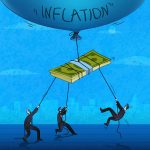While “shelter costs” make up 25% of the Consumer Price Index, the calculation only looks at rising rents. SMR calls that “a major flaw” and developed its own index.
HACKETTSTOWN, N.J. – SMR Research Corp. says there’s “a major flaw in the government’s Consumer Price Index (CPI)” that its new Homeowners Cost of Living (HCOL) report hopes to correct.
SMR’s index found a 3.21% increase in May, saying that compares to the CPI’s “assumed” annual increase of 8.0% in homeowner costs.
Some 75% of the CPI is comprised of actual measurements of cost for gasoline, food, and hundreds of other items, while the other 25% comes from homeowner shelter costs – but the Bureau of Labor Statistics (BLS) doesn’t actually measure these, SMR says. It computes inflation for renters and then assumes that homeowners have the same inflation rate. BLS calls this “Owner’s Equivalent Rent.”
BLS economists view mortgage and property tax payments as investments in an asset (the house), rather than spending. Assigning renter costs to homeowners “is like saying that if all dogs were cats, they’d stop barking,” SMR President Jim Kasprzak quipped. “They would, but dogs are not cats, and homeowners are not renters.”
While renters see the direct result of inflation when they renew contracts, 37% of homeowners own their homes debt-free – and most others with mortgages have 30-year or 15-year fixed-rate loans, where the payments stay the same for years, regardless of that year’s inflation numbers.
“Using real data on median homeowner mortgage and property tax monthly costs, the overall U.S. rate of inflation in May would be 2.78% – not the 4.0% currently shown in the CPI published on June 13,” Kasprzak says. “We’re much closer to solving the national inflation problem than some people think.”
© 2023 Florida Realtors®
©Florida Realtors®
Source link



